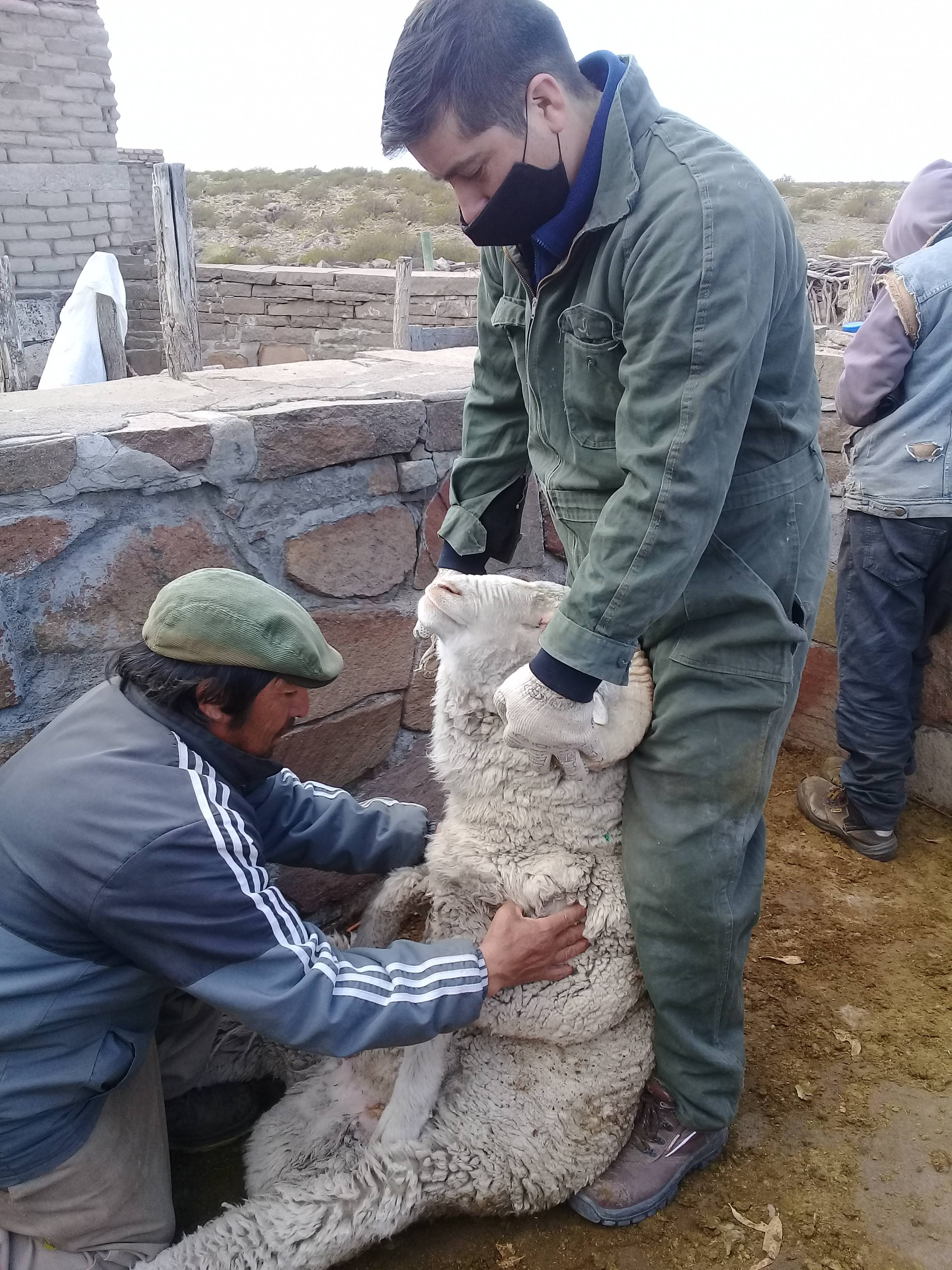In extensive sheep systems, the clinical reproductive evaluation of the ram and visual selection of dams allows determining potentially fertile breeding stock.

It is advisable to perform an examination annually, at least 60 days before service, in order to detect in time recoverable affections and to discard those that present irreversible problems. This examination is a very useful tool, because the producer ensures a good pregnancy rate, which should be between 85-95%.
In this sense, and within the framework of the FONTAGRO project "Adaptation to climate change in family livestock", the Los Menucos Technical Office of the Jacobacci Extension Agency of INTA carried out a working day in the demonstration field El Arbolito together with its owner, Raúl Catrín, where the main productive characteristics to examine in a ram were reviewed and the presence of wool on the face (covered face), size of the scrotum, body condition and girth were analyzed.
Although the evaluation of the body condition is not a reproductive characteristic, it has an impact on the walking function, which has a great impact in extensive systems, where long distances must be walked and in mating.
Subsequently, an individual revision of the breeders is carried out, always using the same methodology, and using the INTA Bariloche (https://www.produccion-animal.com.ar/produccion_ovina/produccion_ovina/216-Revisacion_carneros.pdf)
The methodology consists of evaluating, with the animal standing up: mouth (age determination), eyes, loin and posture in detail.
Then, with the animal seated, the maxillary, scapular and inguinal ganglions are evaluated by palpation. Subsequently, prepuce and penis are evaluated, where sores that can cause inflammation and pain are usually observed.
At the testicular level, both testicles should be palpated, with displacement without adhesions inside the scrotal sac, with good size, consistency and elasticity.
We reviewed this methodology in practice with the participating producers, with the objective that they acquire experience and can adopt it in the next services, as a reproductive examination practice that will reduce productive losses.




